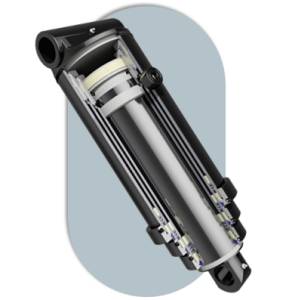Description
Gear Pumps: Reliable and Efficient Fluid Transfer Solutions
Gear pumps are robust and versatile positive displacement pumps known for their reliable performance and ability to handle a wide range of fluids, even those with high viscosity or containing solids. They operate by meshing two gears within a close-fitting casing, creating a sealed cavity that traps and transfers fluid. This positive displacement mechanism ensures consistent flow regardless of pressure fluctuations, making them ideal for numerous industrial and commercial applications.
How Gear Pumps Work:
Two interlocked gears rotate within a casing. As the gears rotate, fluid is drawn into the pump casing on the suction side, trapped between the gear teeth and the casing, and then carried around to the discharge side where it's forced out under pressure. This continuous process creates a smooth, pulsation-free flow.
Key Features and Benefits:
- High Viscosity Handling: Gear pumps excel at pumping high-viscosity fluids like oils, resins, and adhesives, where other pump types may struggle.
- Self-Priming Capability: Many gear pump designs are self-priming, eliminating the need for separate priming systems, simplifying installation and operation.
- High Pressure Capability: Gear pumps can generate significant pressure, making them suitable for applications requiring high-pressure fluid delivery.
- Consistent Flow Rate: The positive displacement mechanism ensures a consistent flow rate, independent of pressure variations in the system.
- Simple Design and Robust Construction: Gear pumps are relatively simple in design, leading to robust construction, long lifespan, and easy maintenance.
- Low Shear: The gentle pumping action minimizes shear forces on the fluid, making them suitable for shear-sensitive materials.
- Handles Solids (with limitations): Certain gear pump designs can handle fluids containing small solid particles, although particle size and concentration are important considerations.
- Wide Range of Materials: Gear pumps are available in various materials (e.g., cast iron, stainless steel, bronze) to suit specific fluid compatibility and operational requirements.
Applications:
Gear pumps find applications in a wide range of industries and processes, including:
- Chemical Processing: Transferring chemicals, solvents, and resins.
- Food and Beverage: Pumping viscous fluids like syrups, sauces, and oils.
- Oil and Gas: Transferring crude oil, lubricants, and other petroleum products.
- Pharmaceutical: Pumping pharmaceutical fluids and ingredients.
- Manufacturing: Lubrication systems, coolant circulation, and material handling.
- Wastewater Treatment: Pumping sludge and other viscous fluids.
Choosing the Right Gear Pump:
Selecting the appropriate gear pump depends on several factors:
- Fluid Properties: Viscosity, temperature, pressure, abrasiveness, and chemical compatibility.
- Flow Rate Requirements: The volume of fluid to be pumped per unit time.
- Pressure Requirements: The pressure needed to deliver the fluid to its destination.
- Fluid Temperature: The operating temperature of the fluid.
- Material Compatibility: Choosing pump materials that are resistant to corrosion and degradation from the fluid.
Our Gear Pump Offerings:
[Here, you would insert information about specific gear pumps offered, including models, specifications, and links to product pages.] For example:
- Model X: High-pressure gear pump, stainless steel construction, ideal for high-viscosity applications. [Link to product page]
- Model Y: Self-priming gear pump, cast iron construction, suitable for general-purpose applications. [Link to product page]
Contact us today to discuss your specific requirements and find the perfect gear pump solution for your application.
